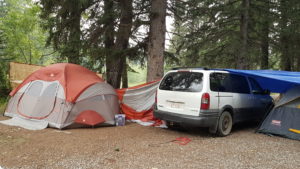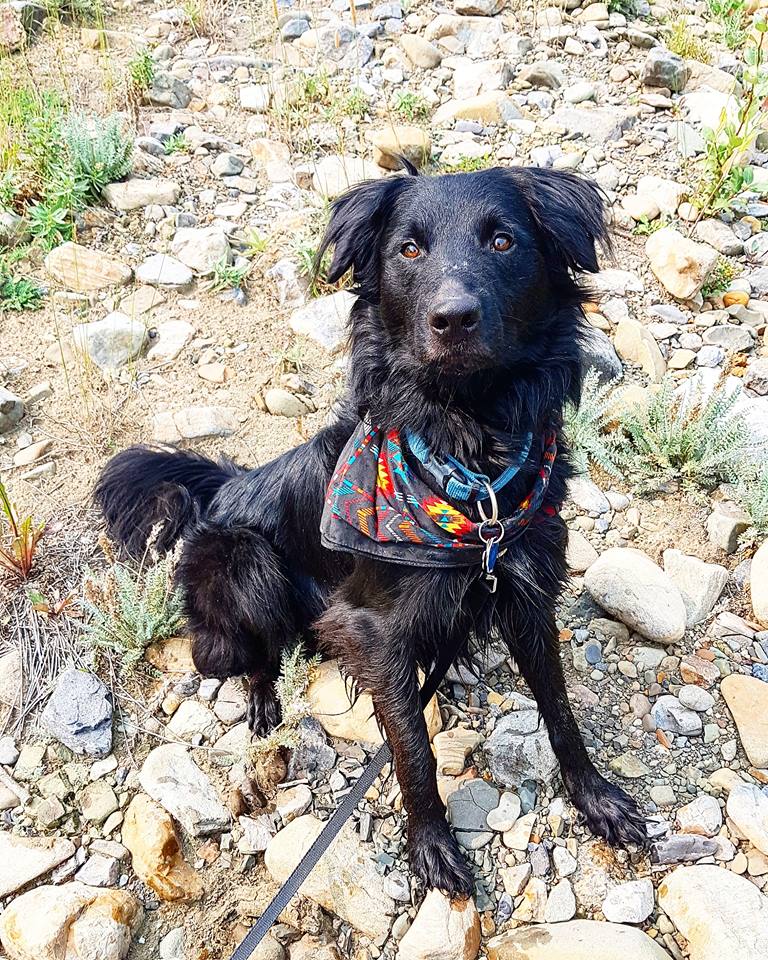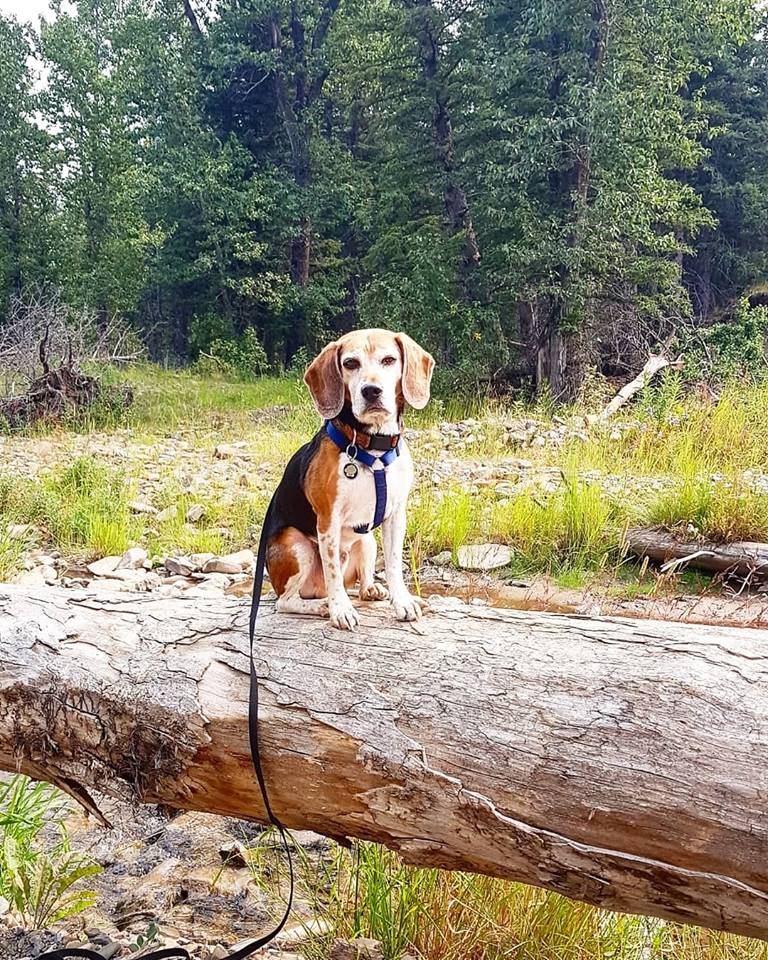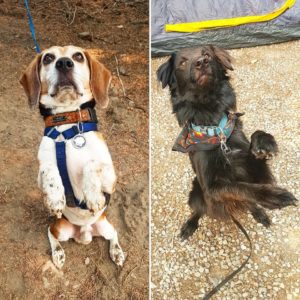CAMPING with the REACTIVE DOG

I did a post a while back about camping with reactive dogs, but I am making some revisions and going to go into further detail on how that looks for my household and our reactive dog/s.
To give some insight: Charlie, my Beagle, barks at other dogs, though he just gets some barrier frustration and wants to go say hi to everyone and be friends with everyone. Anyone who knows the, “He’s friendly!” issue, knows why I don’t let Charlie be that dog. Santeria is generally a very neutral dog, and usually my go to when working with on leash reactive dogs because she can keep her cool at a distance, but she will excitedly bark at the people who are coming into camp because she is so happy to see them! Boone is my truly reactive dog. He had a lot of odds stacked against him from the get go, from being a bottle baby because his mom rejected him at birth, to lack of socialization with his litter-mates, and genetic predisposition(his mom was very reactive as well). Boone is generally afraid of strangers, most typically men(fine with most women and children), other dogs, and anything else he may perceive as scary. His reactions are anywhere from a freeze and growl, to lunging, snapping and barking depending on his level of fear. He has come a long way through behavior modification, but that is another post in it’s own right.
When you go camping, you’re doing so for what is, likely a variety of reasons. Maybe you’re looking for the luxurious escape and quiet that nature brings, maybe you want to go roast some hot dogs and marshmallows on a fire in the middle of the forest, or maybe there are other reasons. But when we think about camping, we don’t often like to think of how our best friends might struggle with it. Heck, maybe they LOVE being outside, but being in a campground can be hard – you’re still bound to see people and dogs.
So how do you deal with that and combat it to set your dog up for success? And what are some camping list essentials for the pups?
I highly recommend, especially with reactive dogs, to research the campground you intend to go to, and if you have the opportunity, go check it out prior to deciding to camp there. You can see how the privacy is between sites, and best situate yourselves if you know what you have to work with. I like to avoid campgrounds that get super packed with people, and I like campgrounds with a lot of trees and foliage for privacy.
Camping List Essentials for the Reactive Dog:
- Long lines(these are great for tethering your dog, and are a much safer alternative to giving your pup fomr freedom, to the flexi) and regular leashes
- Collars with ID tags(just in case), and harnesses(particularly useful for dogs who might lunge, so they don’t do any damage to their neck)
- Crates
- Dog beds/blankets
- Towels for drying off, especially if you have a water-lover
- X-pens(I LOVE x-pens because they are handy for a massive variety of reasons, including creating fences, visual barriers, and can be used as an alternative to tethering your pup)
- Clean water(I always fill their auto-water bowl, tip the jug upside down and cover the hole with a freezer bag, and cart it along with us). Many of the water sources in the wild can often actually carry parasites and diseases that aren’t great for our dogs either – Giardia isn’t fun to deal with!
- Dog food/treats in a SEALED container so as not to attract wildlife
- First aid kit(including dog-safe items)
- Basket-style Muzzle – properly fitted for panting(if your dog needs it, if not, it is always a great idea to have muzzles in your first aid kit, just in case!).
- Tick remover tool!
- Dog booties(these can come in handy if your dogs damage or injure their paws, but are also great for abrasive terrain)
- Carabiners(I use these to secure leashes to collars, harnesses to collars, x-pens closed, connecting leashes/long lines, etc)
- Stuff to create visual barriers(we like tarps and extra sheets that we don’t care about – know those flat sheets you never use? Now you can!)
- Treat/food dispensing toys
- High value chews(LEARN from my mistake and DO NOT bring raw bones unless you are prepared for WASPS), like Bully Sticks, pig ears, etc.
- Laminated Notes to hang around the entrance to your site(this is mainly to keep people such as the campground manager aware that your pup is fearful or reactive). I suggest something along the lines of, “Fearful dog, please announce yourself.”
- Dog Lights(whether this is a light-up collar/harness, a light that hangs from the collar, etc. This helps you to see where your dog is when it is too dark outside.
- Poop Bags(don’t be that person!). Regardless of being in the forest, if you are on a campground, most have rules for dogs to be on leash and cleaned up after, but more to that, others will likely be walking around the areas your dog goes to the bathroom and nobody wants to step in a fresh pile from someone’s dog!
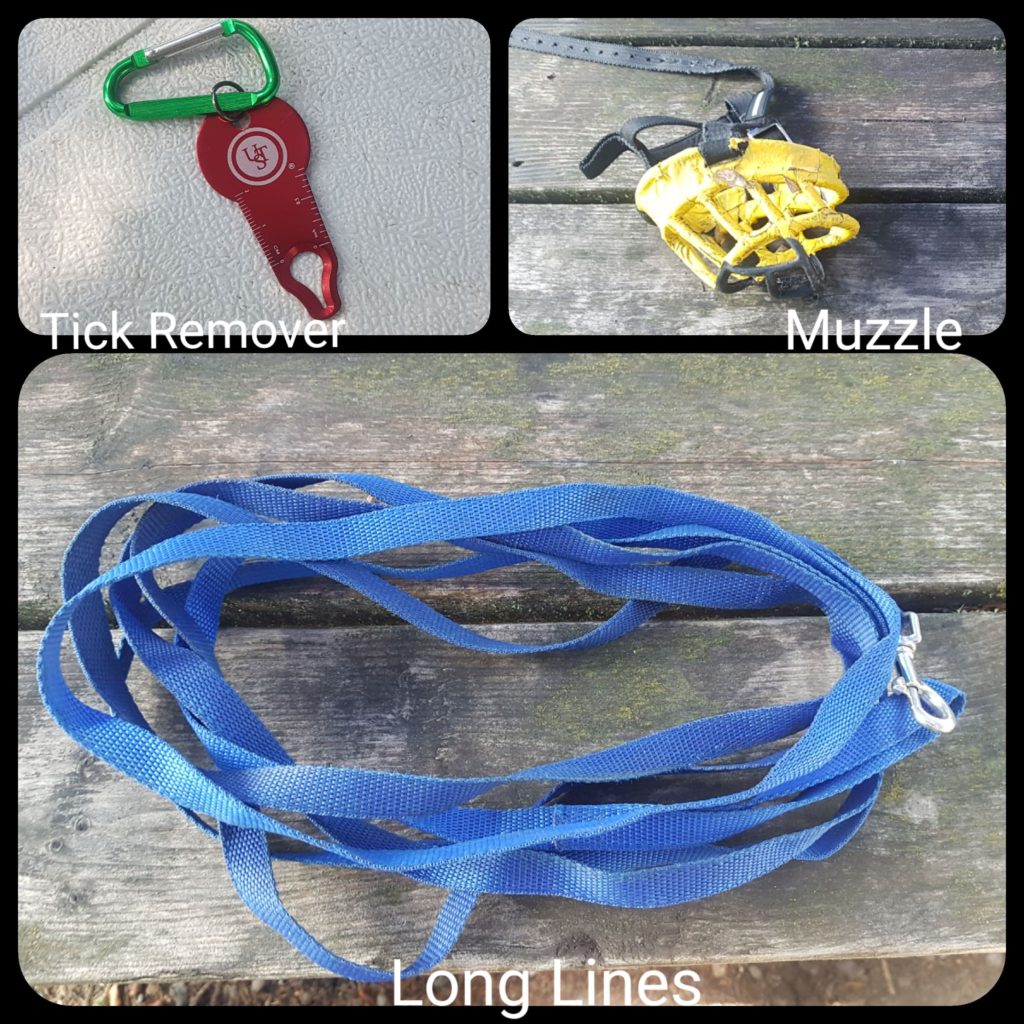
At the campground:
- When you arrive to your campsite, bring your dog out on a leash and allow them to sniff around and familiarize themselves with the area prior to setting up. This gives them a chance to settle, as well as to have a potty break if they need it!
- When you begin setting up, create visual barriers to help him feel safe. For reactive dogs, seeing lots of strangers, or other dogs can be hard, and you can reduce their stress by putting up these barriers.

- Give them breaks in their safe place, if they need it, to decompress. I highly recommend doing this regardless of whether they have any reactions, as this can help keep them calmer. If you wait until they have an outburst, you may give them the feeling of being punished instead. This can be done in an x-pen, car, crate, tent, etc. Wherever they feel safe enough to relax, and comfortable. NOTE: DO NOT LEAVE DOGS IN HOT CARS.
- Take the dogs for walks at quiet times(avoid peak busy times, such as morning bathroom breaks for people) so that they can get plenty of sniffing(naturally calming behavior) in, some mental stimulation, and physical stimulation.

- Bring high value chews(NOT RAW or you will see wasps!), for your dogs to settle down with and to give them something constructive and positive to do. These are great for times when you are busy or need the dogs to settle on their own for a period of time.

This is the view of our campsite from inside and outside. As you can see, there is plenty of visual coverage for the dogs. For the most part, people and other dogs cannot see in, and our dogs can’t really see out, helping to reduce their stress levels.
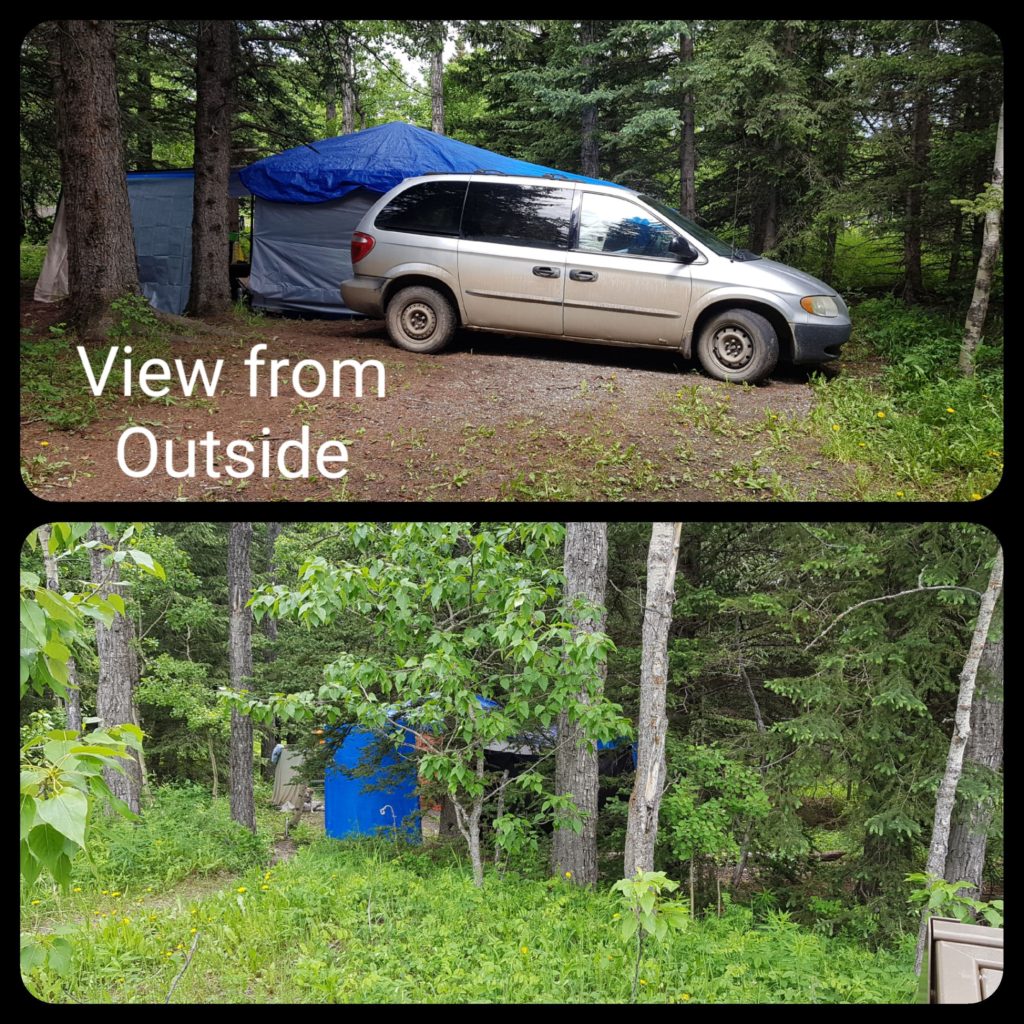

All in all, our camping weekend was a massive success(even despite rain and hail – thank you gazebo and tarps!), and our dogs were comfortable for the majority of our trip. Many others were a little astonished at our set up and we received lots of compliments on it.
We set up the dogs crates in the van for at night time, as they all feel safest there and the temperatures were supposed to be fairly mild/cool throughout the nights we camped. We had plenty of bedding and blankets for them, and even hung a few curtains for visual barriers within the vehicle as well. I also highly recommend a portable fan to put on at night if you go this route.
My biggest recommendation – have fun! Relax, breathe, and enjoy your outing with your dog/s!
– Sam

